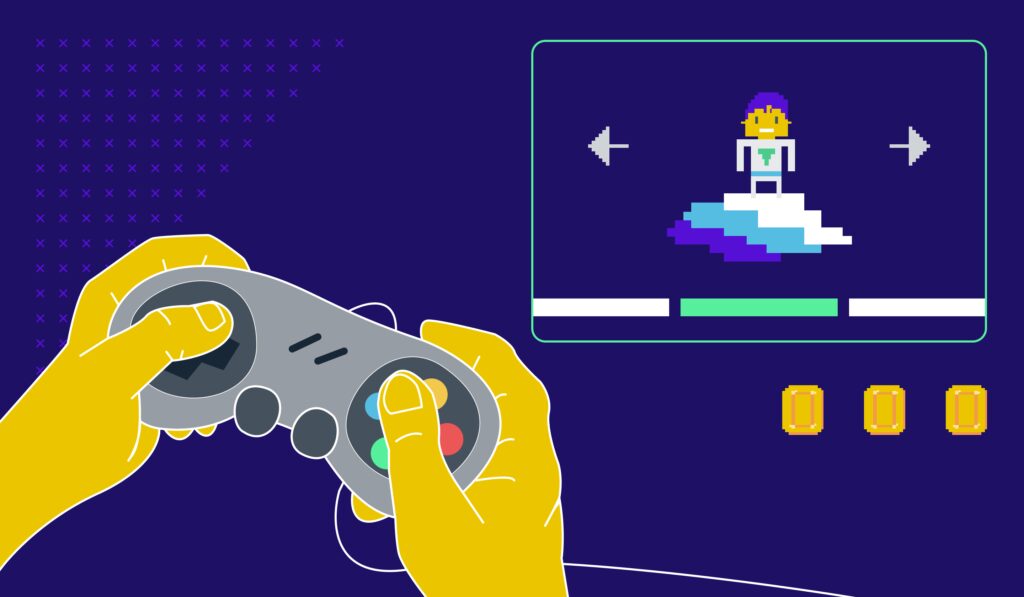Game design includes gameplay mechanics and user interface design, creating an immersive experience for players. Gameplay mechanics govern the player’s interactions with the game, while user interface design minimizes distractions and improves navigation. Designers aim to create immersive experiences by developing a realistic and consistent game world with an engaging story, appropriate art style, and sound design. The industry is rapidly advancing, with artificial intelligence, virtual reality, and augmented reality set to influence the future of game design.
Inside Game Design: A Comprehensive Look at Gameplay Mechanics and User Interface Design
Game design is at the center of the video game industry. Video games are interactive, immersive experiences, and it’s the game design that makes them so captivating. From classic arcade games to modern console games, game design has evolved to create an intricate mix of gameplay mechanics and intuitive user interface design.
The Building Blocks of a Game
Game designers have to craft an entire world where the game takes place. This world is built using codes, scripts, and art assets. The game is divided into levels, each with its own set of objectives and challenges. The gameplay mechanics are a crucial aspect of game design. These mechanics define the rules of the game, the objectives, and the way the player interacts with it.
Gameplay Mechanics
Gameplay mechanics are the rules and systems that govern how the player interacts with the game. These mechanics determine what the player can do, what they can’t do, and what happens when they do certain actions. For example, in a racing game, the mechanics would involve the specific controls for accelerating, braking, and steering, as well as the physics engine that governs the player’s vehicle’s movements.
The core mechanics are the most important gameplay mechanics because they drive the game’s objectives. Other mechanics may change as the player progresses through the levels, unlocking new abilities, weapons, or tools.
User Interface Design
Game design isn’t just about the mechanics; it’s also about the user interface. A good UI is easy to use, intuitive and minimizes the distractions to the player. The UI design is crucial because it influences the player’s experience and their ability to navigate the game. The UI design consists of the following components:
- Main Menu – The main menu is the first screen that players see when they start the game. It typically contains options for starting a new game, loading a saved game, controlling game settings, or leaving the game.
- HUD (Heads-Up Display) – The HUD provides key information about the game’s current state such as the player’s health, ammo, mini-map, and objectives.
- Inventory – An inventory system allows players to manage the items they’ve collected throughout the game.
- Pause Menu – The pause menu provides options for players to pause, save, quit, or adjust their game settings.
- Tutorial – A tutorial is an interactive guide that introduces the player to the game’s mechanics, controls, and objectives.
Designing for Immersion
Game designers aim to create an immersive experience that draws players into the game. Immersion is the feeling of being completely and totally absorbed in the game. The most effective way to achieve immersion is to create a world that is believable and consistent. The world should have its own rules, culture, and history, and the player should feel like they are a part of that world.
The art style, sound design, and storytelling are important elements that affect the player’s immersion.
Art Style
The art style sets the tone for the game’s atmosphere and defines its visual identity. It can range from realistic settings to cartoonish or abstract art styles. The art style should reinforce the game’s core mechanics, objectives, and story.
Sound Design
The sound design should complement the visuals and immerse the player in the game world. An effective sound design enhances the player’s emotional responses and adds to the game’s atmosphere.
Storytelling
The storytelling should be engaging and enthralling, with a compelling narrative that resonates with the player. It should be consistent with the game mechanics and objectives.
The Future of Game Design
The video game industry is constantly evolving, and game designers must keep up with the latest technology and trends to create games that are fresh and exciting. The future of game design will be influenced by advancements in artificial intelligence, virtual reality, and augmented reality.
The use of AI in games will allow designers to create games that are adaptive and responsive to the player’s actions. Virtual and augmented reality will create new opportunities for immersive gameplay experiences that blur the line between reality and the game world.
Conclusion
Game design is an intricate mix of gameplay mechanics and intuitive user interface design. The core mechanics and user interface are key components of game design, and they must be designed with immersion in mind. The future of game design promises to be exciting, with new technologies and trends set to influence the industry in the coming years.
